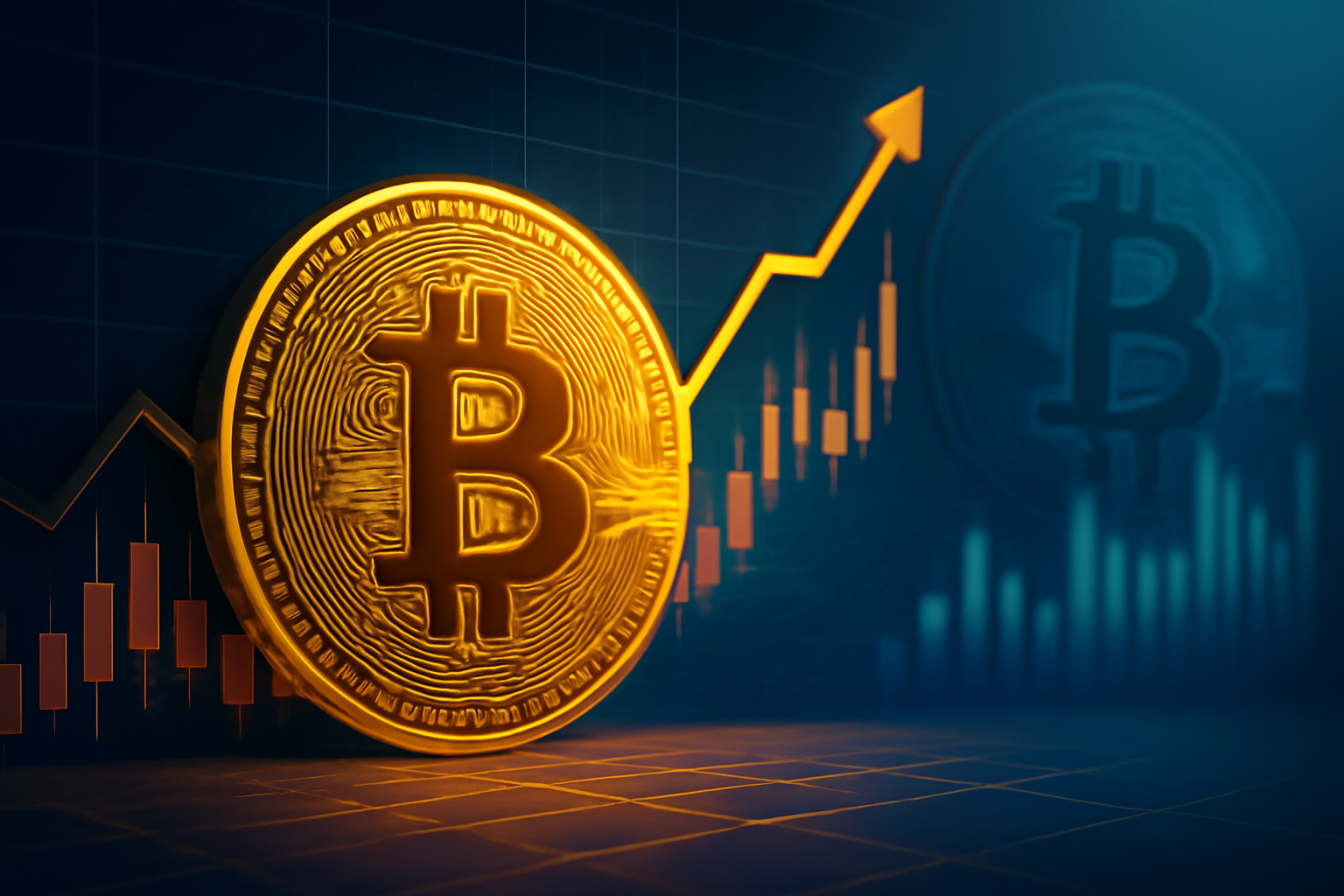Bitcoin Hits a Near-Record High Amid Inflation Concerns
Bitcoin has reached new heights, with its price climbing to $109,500 on June 11, 2025, inching closer to its all-time high of nearly $112,000. This surge has reignited excitement in the cryptocurrency market, but it comes amid rising concerns about inflation and its potential impact on global monetary policies. As investors await the U.S. Consumer Price Index (CPI) data, which is expected to show a 2.5% year-over-year rise in inflation, the market is bracing for possible volatility. Higher-than-expected inflation could significantly influence Federal Reserve decisions on interest rates, which in turn would have major implications for Bitcoin and the broader crypto market.
For investors, this moment presents both opportunities and risks. Understanding how inflation data could shape the direction of crypto markets is crucial for positioning in a rapidly evolving financial landscape. Bitcoin’s impressive run has many investors wondering whether it is poised to break its all-time high or whether inflation concerns will derail its upward momentum.
Why This Matters for Investors
Bitcoin and Inflation: A Symbiotic Relationship
Bitcoin, often considered a “safe haven” asset, has historically benefited from inflationary pressures. As fiat currencies are devalued by rising inflation, Bitcoin is viewed by many as a store of value—much like gold. In recent months, Bitcoin has attracted institutional investors and hedge funds seeking to hedge against inflationary risks.
As of June 11, 2025, Bitcoin’s price has surged due to both increased demand for alternative assets and growing concerns about inflation. Investors are closely watching the CPI data release, as it could indicate whether inflation is becoming entrenched. If inflation exceeds the expected 2.5% increase, it may further validate Bitcoin’s role as a hedge against traditional economic pressures. On the other hand, if inflation is lower than expected, this could dampen the bullish sentiment in the cryptocurrency market.
The Impact of U.S. Federal Reserve’s Decisions
The U.S. Federal Reserve’s monetary policy is another factor influencing Bitcoin’s performance. If inflation data comes in higher than expected, the Fed may take a more aggressive stance in tightening monetary policy, potentially raising interest rates. While this might strengthen the U.S. dollar and reduce risk appetite, it could simultaneously make Bitcoin more attractive to investors looking to safeguard their wealth from inflation.
Conversely, if the Fed adopts a more dovish approach by keeping interest rates lower for longer, this could fuel further investment into Bitcoin and other cryptocurrencies, as investors seek higher returns in a low-interest-rate environment. The balance between inflation expectations and Fed actions will play a pivotal role in Bitcoin’s price trajectory over the coming months.
A Strong Case for Bitcoin as a Hedge Against Inflation
The ongoing rise in Bitcoin’s price reflects a growing belief among investors that the cryptocurrency can function as a hedge against inflation and global economic uncertainty. According to data from analytics firm Chainalysis, institutional investors’ holdings in Bitcoin have surged in recent months, with large-scale buyers recognizing its potential to preserve purchasing power amidst rising inflation.
Moreover, Bitcoin’s decentralized nature appeals to those concerned with the control that central banks and governments hold over traditional currencies. As inflation concerns mount globally, Bitcoin provides a hedge against the devaluation of fiat currencies, and many investors are increasingly turning to it as an alternative store of value.
Future Trends to Watch
Inflationary Pressures on the Horizon
With inflation rates rising globally, Bitcoin is likely to remain a key asset for those looking to hedge against devaluation. If inflation continues to exceed expectations, the narrative around Bitcoin as a store of value will only gain strength. Investors should stay attuned to the latest inflation data and Fed commentary to gauge how these macroeconomic factors may influence Bitcoin’s performance.
Regulatory Scrutiny and Market Maturity
While Bitcoin is soaring, regulatory scrutiny remains a concern. As the crypto market grows, governments worldwide are exploring regulations to curb potential market manipulation and fraud. In particular, the U.S. Securities and Exchange Commission (SEC) and other regulatory bodies are focusing on how cryptocurrencies like Bitcoin will be classified and taxed. Any regulatory changes or crackdowns could create short-term volatility, but ultimately, a clear regulatory framework could bolster Bitcoin’s legitimacy and contribute to its long-term growth.
Institutional Adoption of Bitcoin
As institutional adoption continues to grow, Bitcoin is poised to become a more mainstream asset. Major financial institutions, including JPMorgan and BlackRock, have launched Bitcoin-focused funds, and corporate giants like Tesla and MicroStrategy have made large Bitcoin investments. The increasing involvement of institutional investors indicates that Bitcoin is not just a speculative asset but is being integrated into traditional investment portfolios. This trend is likely to continue as Bitcoin gains wider acceptance.
Actionable Takeaways for Investors
- Monitor Inflation Data: The upcoming CPI report is crucial. If inflation comes in higher than expected, Bitcoin could continue its upward trajectory. However, if inflation is lower than anticipated, it might reduce demand for Bitcoin as an inflation hedge.
- Watch the Federal Reserve: The Fed’s stance on interest rates will be pivotal. A more aggressive tightening policy could weigh on risk assets like Bitcoin, while a dovish stance could fuel further bullish momentum in the crypto market.
- Diversify into Bitcoin as a Hedge: Given Bitcoin’s role as a hedge against inflation, investors should consider increasing their exposure to Bitcoin as part of a diversified portfolio, especially if inflationary pressures persist.
Bitcoin’s Strong Growth Potential Amid Inflation Concerns
Bitcoin’s remarkable ascent to $109,500, approaching its all-time high, highlights the growing investor interest in cryptocurrencies as a hedge against inflation. With the upcoming inflation data and the Federal Reserve’s potential policy changes looming, the market’s outlook for Bitcoin remains highly sensitive to macroeconomic factors. For investors, Bitcoin represents both an opportunity to capitalize on rising inflation expectations and a safeguard against the economic uncertainties of tomorrow. By closely monitoring inflation trends and regulatory developments, investors can position themselves to profit from Bitcoin’s continued rise.





